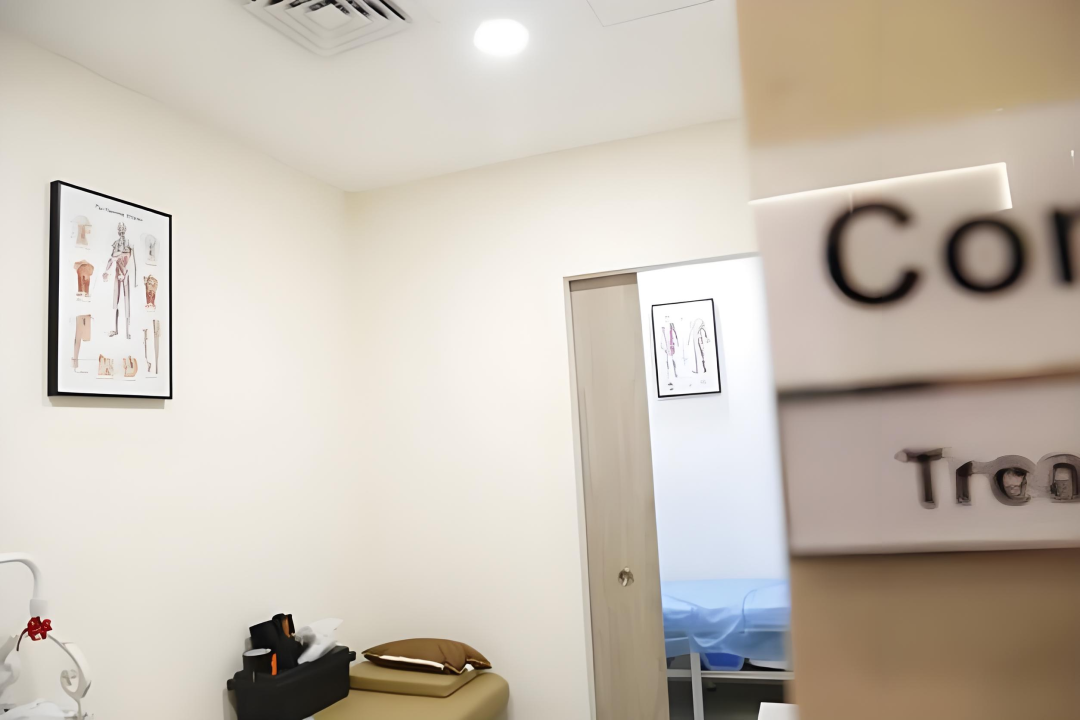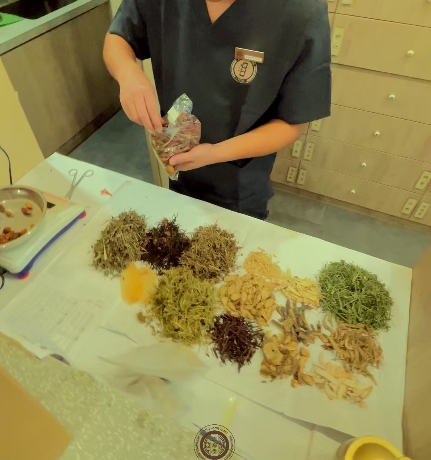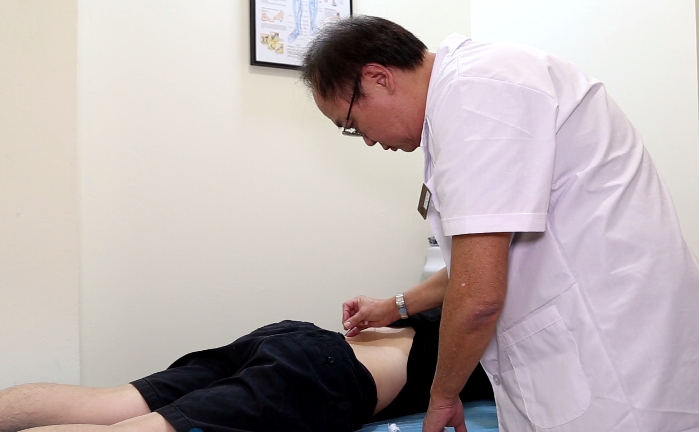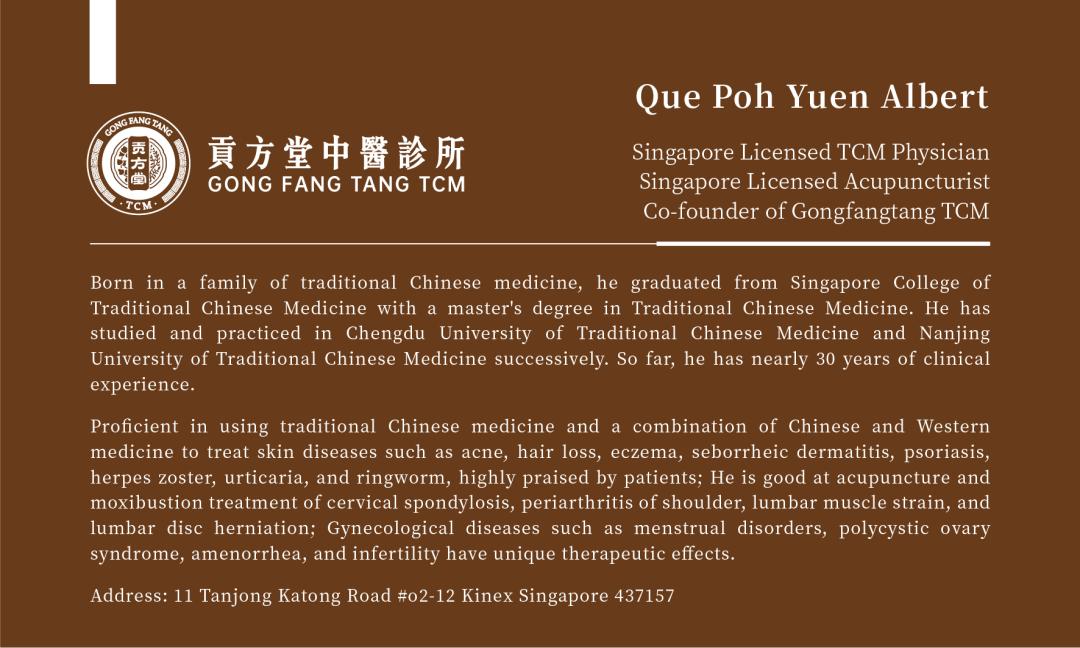- Physicians
- Clinics
- TCM
- Western GP
-
Fees
-
Deals & Privileges
- About & Resources
- Contact Us
Do You Suffer from Back Pain After Long Sitting? Bending Over Makes You Stiff as Wood? Lumbar Problems Are Actually an Alarm for Visceral Imbalance! Singapore Gong Fang Tang TCM expert Dr. Que Poh Yuen Albert points out: 80% of modern back pain is not a bone problem, but a "double whammy" of meridian blockage and kidney qi deficiency. Taking Chinese herbs + acupuncture at specific points provides a dual approach with good results!

What Causes Lumbar Pain?
Cold-Dampness Stasis Blockage Type (65%)
Air conditioning/cold air blowing directly on the back → Cold pathogen invades collaterals like ice.
Long sitting, little movement, qi and blood stagnation → Fixed pain area like needle pricks.
Kidney Essence Deficiency Type (Common in Middle-Aged/Elderly)
Kidney house malnourished, bones weak → Worse pain in morning, movement slow.
Accompanied by tinnitus, weak legs, frequent nighttime urination.
Trauma/Fall Injury Type (Common in Young Adults)
Improper exercise/heavy lifting → Qi stagnation and blood stasis becoming old injury.

How Does TCM Treat Lumbar Pain?
Physician Dr. Que Poh Yuen Albert, with over 30 years of experience in TCM, excels in treating various pain syndromes with combined herbal medicine and acupuncture. He shares the ancient premier formula for back pain – Duhuo Jisheng Tang (Pubescent Angelica and Mistletoe Decoction) – combined with acupuncture, offering new hope for lumbar pain patients.
Duhuo Jisheng Tang is composed of: Duhuo (Pubescent Angelica Root), Sangjisheng (Chinese Taxillus Herb), Duzhong (Eucommia Bark), Niuxi (Achyranthes Root), Xixin (Manchurian Wildginger), Qinjiao (Largeleaf Gentian Root), Fuling (Poria), Rougui (Cassia Bark), Fangfeng (Saposhnikovia Root), Chuanxiong (Szechuan Lovage Rhizome), Renshen (Ginseng), Gancao (Liquorice Root), Danggui (Chinese Angelica), Shaoyao (Peony Root), Dihuang (Rehmannia Root).
Monarch Herbs: Duhuo, Sangjisheng: Deeply search out cold-dampness in bone crevices.
Minister Herbs: Duzhong, Niuxi: Tonify kidneys, strengthen lower back, guide herbs downward.
Assistant/Envoy Herbs: Xixin, Fangfeng: Break ice, dispel impediment, unblock yang qi.
Modifications:
Electric shock-like stabbing pain: Add Dilong (Earthworm) (unblocks collaterals, relieves pain).
Bone-chilling cold pain: Add Fuzi (Prepared Aconite Root) (decoct first for 2 hours).
Severe morning stiffness: Increase Shaoyao (Peony Root) (softens sinews, relieves spasm).
During acupuncture treatment, Physician Qiu selects specific points like Shenshu (BL23), Dachangshu (BL25), Weizhong (BL40), and Mingmen (GV4).
Shenshu (BL23), the Back-Shu point of the Kidney, tonifies kidney qi.
Dachangshu (BL25), the transport point for Large Intestine qi, regulates qi and blood in the lower back.
Weizhong (BL40), the He-Sea point of the Bladder Meridian, is known as "for lower back pain, seek Weizhong", excelling at treating back pain.
Mingmen (GV4) warms and tonifies kidney yang, strengthening yang qi in the lower back.
Stimulating these points via needling or moxibustion unblocks meridians, harmonizes qi and blood, achieving the effect of "free flow, no pain". Combining acupuncture and herbs provides a dual approach treating both root and branch.

Medical Case
Patient: Mr. Wang, 45 years old.
Chief Complaint: Lumbar disc herniation for 5 years, recent severe pain, unable to sleep at night. Percussion pain in lower back.
Initial Consultation: Purple-dark tongue with white greasy coating; deep and choppy pulse.
Diagnosis: Classic signs of Cold-Dampness Stasis Blockage.
Prescription: Duhuo Jisheng Tang + Dilong (Earthworm) 15g + Zhichuanwu (Prepared Aconite Main Root) 8g (decocted first).
Acupuncture: 3 times per week.
Result:
Day 3: Achieved continuous sleep for 4 hours at night.
Day 7: Lumbar pain significantly reduced.
Day 14: Lumbar pain basically disappeared.
